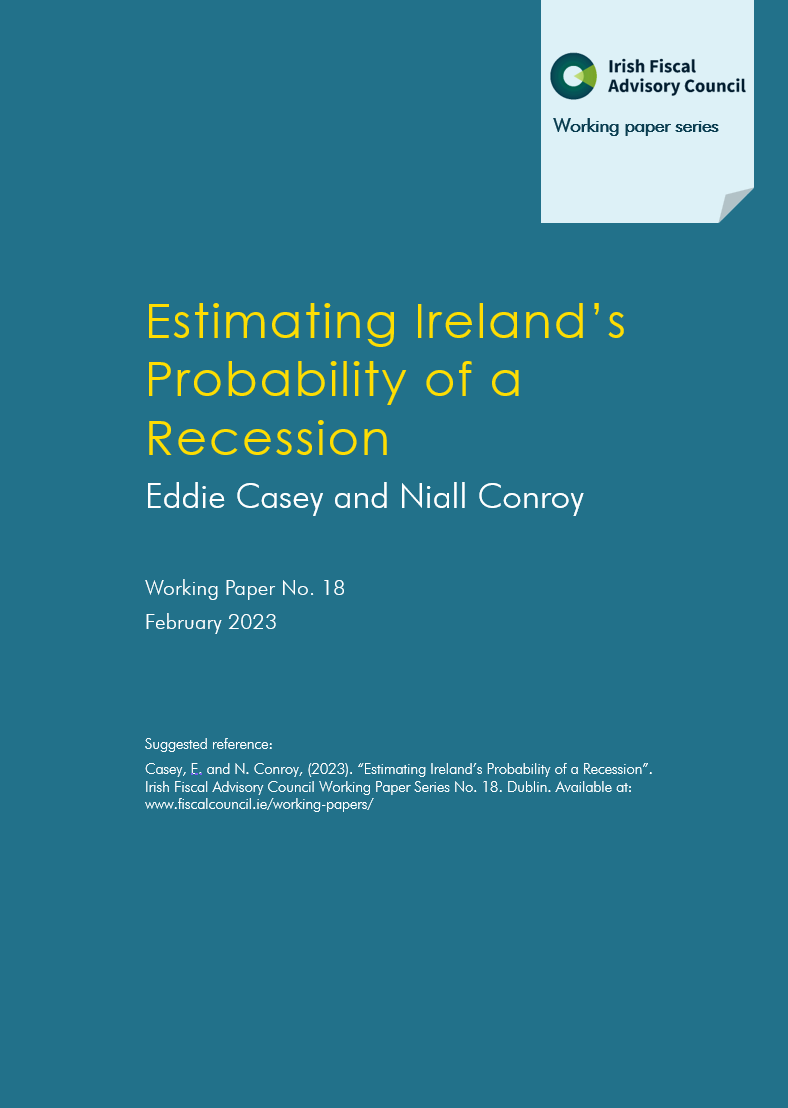This paper explores ways to predict future recessions in Ireland. We make three key contributions. First, we assess multiple potential indicators, including news articles and Google searches. Second, we show that a mixture of domestic and international variables, such as the US Term Spread, perform well when attempting to predict recessions in Ireland. This involves assessing the pseudo real-time historical and out-of-sample performance of models, and the false positive and false negative rates at different thresholds. Third, we identify a useful indicator for predicting recessions that to our knowledge has not been used elsewhere: the surveyed expectations of employment prospects.[1]
What does this paper do?
This paper looks at ways that future recessions in Ireland could be predicted based on assessments of historical indicators and models.
What do the results suggest?
The results suggest that there are some indicators which prove particularly useful. These include external financial measures like the US Term Spread and the US TED Spread, surveys of Irish employment expectations for different sectors, and other measures of new domestic activity.
At the time of writing, the indicators do not suggest a strong probability of a future recession. However, the authors caution that models such as these are by no means a crystal ball. There are many risks not captured and indicators that proved useful in the past may not be so useful today. Geopolitical risks, for example, are important but are beyond the scope of what is included.
[1]The opinions expressed and arguments employed in this paper do not necessarily reflect the official views of the Fiscal Council.

